By 1910, about 2 million children under the age of 15 worked in industry, according to National Archives and Records Administration data.

Some states had started passing child labor laws in the 19th century. Yet other states still allowed children to toil in textile mills, factories, and mines for 60 or more hours per week. Laws also had loopholes. Some laws accepted a parent’s word about a child’s age, so many poor parents lied. Other laws only punished “knowing” violations. Employers often found ways to claim that they didn’t know the true ages of their young workers.
School attendance laws were likewise not strictly enforced. A 1907 Alabama law said children aged 12 to 16 years must attend school for at least eight weeks per year. But school certificates weren’t required.
Laws in northern states were generally more protective of children than those in the South. However, companies competed across state lines. Since child labor was cheap, companies looked for ways to remain competitive and resist or avoid stricter requirements. They might relocate businesses from northern to southern locations.
The Push for Federal Law....
The National Child Labor Committee (NCLC) began pushing for a national law soon after its founding in 1904. Its leaders couldn’t get President Theodore Roosevelt to back a child labor ban introduced by Indiana senator Albert Beveridge in 1906. But, with the president’s support, Congress did order a large-scale study of child workers by the Bureau of Labor. A 1912 law also set up the Children’s Bureau to report on “all matters pertaining to the welfare of children.” The newly formed Department of Labor assumed those agencies’ work and some other responsibilities in 1913.
هذه القصة مأخوذة من طبعة July/August 2017 من Cobblestone American History Magazine for Kids.
ابدأ النسخة التجريبية المجانية من Magzter GOLD لمدة 7 أيام للوصول إلى آلاف القصص المتميزة المنسقة وأكثر من 9,000 مجلة وصحيفة.
بالفعل مشترك ? تسجيل الدخول
هذه القصة مأخوذة من طبعة July/August 2017 من Cobblestone American History Magazine for Kids.
ابدأ النسخة التجريبية المجانية من Magzter GOLD لمدة 7 أيام للوصول إلى آلاف القصص المتميزة المنسقة وأكثر من 9,000 مجلة وصحيفة.
بالفعل مشترك? تسجيل الدخول
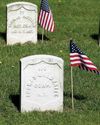
Putting the Pieces Together
Americans needed to begin to put the past behind them, come together, and plan for the future in the spring of 1865. But Abraham Lincoln, the man best equipped to lead them and who had hoped to restore the country as smoothly and peacefully as possible, had been assassinated.
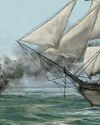
LAST SHOTS
The last Confederate forces in the Civil War didn’t surrender in the spring of 1865 or on a battlefield.
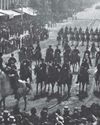
AND IN OTHER 1865 NEWS
A group of African Americans stop at the White House’s annual public reception on January 1, where they shake hands with President Abraham Lincoln.
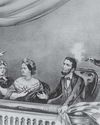
A Plot to Kill President the
For several months, actor John Wilkes Booth’s band of conspirators had plotted to capture President Abraham Lincoln and hold him hostage in exchange for Confederate prisoners.
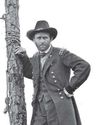
Let the Thing Be Pressed
In June 1864, Union Lieutenant General Ulysses S. Grant began a nearly 10-month campaign in Virginia.
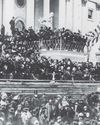
HEALING THE NATION
President Abraham Lincoln took the oath of office for the second time on March 4, 1865.

A Helping Hand
The spring season is hard in any agricultural society. Plants and animals are too small to eat.
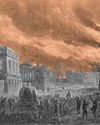
WAR SHERMAN-STYLE
As far as Union Major General William T. Sherman was concerned, the Civil War had gone on long enough.
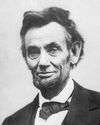
PEACE TALKS
The fall of Fort Fisher made clear that the Confederacy’s days were numbered. Southerners were tired and hungry.
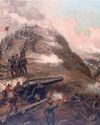
FORT FISHER'S FALL
Outnumbered Confederate soldiers inside Fort Fisher were unable to withstand the approach of Union troops by land and the constant Union naval bombardment from the sea.